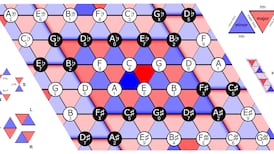You are interested in how stars form – how do you look at that? "Stars form within really massive clouds of dust and plasma (a type of ionised gas) in space. We use the observations that telescopes make of these star-forming regions to help us build computer models of the typical characteristics of these clouds, such as their density, temperature, viscosity, turbulence and magnetic fields.
“Then we run computer simulations to see whether our theories of star formation work for these conditions. We need a lot of computing power for this, so my group uses European supercomputers to do that.”
Where are the star-forming regions that you study? "We look at the characteristics of lots of different star-forming regions, but there is one you can see from Earth on a clear night: the slightly fuzzy region in the sword of the Orion constellation is part of the Orion nebula, a region of space where stars are forming."
Can you also work out what happens when planets form around stars? "That is trickier – the theory is that planets form in discs of plasma and dust around stars, but we don't know much about the conditions in which that happens.
“Maybe we need more observations, which we are now starting to get from the Alma telescope, or maybe we need some new thinking in physics to understand the processes behind planet formation.”
What's the biggest unknown in how stars and planets form? "There are plenty. But the one that interests me the most is how magnetic fields interact with plasma to influence star and planet formation. If you put iron filings on a piece of paper and pass a magnet around underneath, you see patterns of magnetic field lines – such magnetic field lines can have quite amazing effects on how plasmas move where stars and planets are forming, but we have a lot to work out yet."
How did you become interested in astrophysics? "I didn't have a telescope as a kid, but I did like looking at stars – I recall one night when I was five or six I looked out the window and saw three stars lined up in a row. My Dad explained it was Orion's belt.
"I studied theoretical physics in Trinity College Dublin because I liked reasoning out problems, then I went on to do a PhD in the Dublin Institute for Advanced Studies on star formation."
What are the most rewarding and challenging aspects of astrophysics research? "The most rewarding aspect is that you study a topic that really interests you, and you work with lots of international collaborators.
In Ireland I think the most challenging aspect is the lack of funding. The Irish Research Council does fund PhD researchers in the area, but it is difficult to secure funding for more senior researchers. Many of my PhD students have gone on to work in other fields, where the computer modelling skills they learned are really valuable."
What other interests do you have? "Music is a big one. When I was a kid I played the euphonium in the Post Office Workers Union Band, but at 14 I switched to playing guitar in a band. I still jam with friends, mostly playing music by Rush and Paul Gilbert. We try our best not to murder their songs, with varying degrees of failure."











